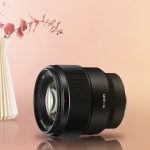
Have you ever wondered how does a digital camera work, this is a question that will hit you sooner or later and you will definitely want answers. When I first started photography, this question really didn’t cross my mind, however, the deeper I was into my hobby the more curious I became, as to how my digital camera worked, how did it capture the image, what happens inside it. Well today, I am going to try to explain it in the most simple way possible so everybody can grasp the basic concepts of how does that magic machine works.
First of all, nearly every camera works more or less in the same manner. Basically, the process of operation of any camera is really similar, and it is all focused on light. Simply said, the light from the scene travels through the lens, and the light-sensitive surface inside the camera captures it. That surface definest what kind of camera you are using. For example, a film camera uses, a light-sensitive film, mainly based on the silver to capture the light, whereas a digital camera utilizes a sensor, more on that later. Let’s talk about the components of a digital camera, shall we?
The Components Of A Digital Camera
As I said every camera operates in a similar fashion and has very similar components. For example, every camera has a lens and a shutter. The lens is a transmissive optical glass that focuses or disperses light rays, the same glass used in a magnifying glass or a telescope.
The other component present in every camera type is the shutter. When the shutter is closed no light is traveling through the lens to the light-sensitive surface, however, when you press the shutter button it opens the shutter for a period of time so the light can travel through to the light-sensitive surface, and create the image. So far so good.
Now we are going to talk about the components that are present in just digital cameras. The most important part is the image sensor, this is essentially a semiconductor chip that has millions of light-sensitive pixels, depending on its specs, for example, a 24MP sensor has 24 million pixels that individually capture the light. On top of the image sensor, there is a color filter that allows pixels to measure colors, by using light waves.
After the pixels in the image sensor collect data, they are sent to the digital-to-analog converter, so the collected data can be converted to digital signal so it can be processed.
After the conversion happens the data goes through the circuit board, which is essentially a mini-computer that has plenty of chips that record and modify data to your preferences and then it gets recorded to your memory card.
Also, it is worth mentioning the display and the viewfinder. The display is present in every digital camera, however, the viewfinders are present as well in most of them. Through the display, you can check the scene, select focus points, adjust settings and so on, and the viewfinder is perfect for seeing exactly what the sensor will capture.
Since we know the components of our camera let’s explain the process of capturing image step by step to have a deeper understanding of how our cameras work. This is not just geeky stuff that may be considered useless, this information will help you have a deeper insight into how your camera works, which in turn will help you achieve better photographs. So let’s see.
If you searched for digital cameras you will see a real wide array of them, ranging from compact point-and-shoots, to bridge cameras, to 360-cameras, action cameras, entry-level and high-end mirrorless interchangeable lens cameras, DSLRs and so on. But the process of capturing image is always the same in a digital camera, while they may be added components in complex DSLRs, the process goes through the same steps.
When you press the shutter button, you allow the light to travel through the lens to the image sensor that we mentioned earlier. When doing so, the light hits individual pixels on the image sensor, which then measures the intensity of the light, delivering a precise composition.
While this happens the light from the scene must be focused precisely onto the image sensor, that is where the lens comes into the picture. In the lens, various glass elements will rotate to deliver precise focus, if you choose the correct settings that are, if not the results will be imprecise and blurry.
After this process happens the light that pixels have captured are stored as electrons, which is an analog signal, after the electrons go through the analog-to-digital converter, and this process is pretty self-explanatory.
Then the data must be stored somewhere, and that is where the chips and processor come to the party, to store the data onto your memory card.
This is the simplest way that a digital camera works and captures the image. However, in digital single-lens reflex cameras there are few more added elements that deliver better results, but make the process a little more complicated.
Digital single-lens reflex cameras work in the same manner as the other digital cameras but have a major difference, the reflex mirror as their name implies. This reflex mirror acts as the shutter of the device, which is retracted to make way for the light to pass when you press the button. But it has another function, as it reflects the light of the scene through the matte focusing screen and condenser lens to the pentaprism which then reflects it to the viewfinder for the exact representation of the scene.
There you have it I hope you have a deeper understanding as to how a digital camera works, and I hope that this will push you to progress your skill further.

Wedding Photographer
From nature to urban landscapes, my camera is my tool for expressing my creativity and telling stories through my lens.



